Picture this: you’re walking through the bustling highways of modern Texas, from the concrete jungles of Dallas to the rolling hills near Austin. But what if I told you that millions of years ago, this very same land was a prehistoric paradise where massive dinosaurs thundered across ancient landscapes? From the Triassic to the Upper Cretaceous periods, dinosaurs roamed Texas. Fossils of 21 different dinosaurs and footprints have been found across the state. You might be surprised to learn that Texas wasn’t just home to a few scattered dinosaur species – it was actually a bustling dinosaur highway that witnessed some of the most spectacular creatures to ever walk the Earth.
The Towering Terror: Acrocanthosaurus atokensis

Imagine running into a predator that stood as tall as a two-story building and could sprint faster than any human athlete. Acrocanthosaurus is a genus of carcharodontosaurid dinosaurs that existed in what is now North America during the Aptian and early Albian stages of the Early Cretaceous, from 113 to 110 million years ago. This fearsome carnivore was like nature’s version of a medieval knight, but instead of armor, it sported a dramatic ridge of tall spines running down its back that likely supported powerful muscles. At nearly 40 feet long, Acrocanthosaurus atokensis—or Acro—was one of North America’s largest predators (100 – 115 mya). With a large head, powerful back legs, and relatively small arms, it looked very similar to a Tyrannosaurus rex. However, unlike a T. rex, Acro had tall spinal processes, which supported a strong muscle ridge or “sail”. Scientists believe this sail might have served multiple purposes – from attracting mates to regulating body temperature, or even making the predator appear larger and more intimidating to rivals. Acrocanthosaurus left hundreds of three-toed fossil footprints throughout central and northern Texas. Acrocanthosaurus was initially found in nearby Oklahoma, but it wasn’t until two far more complete specimens were found in Texas’ Twin Mountains Formation that the dinosaur became widely known.
The Gentle Giant: Sauroposeidon proteles (Texas State Dinosaur)
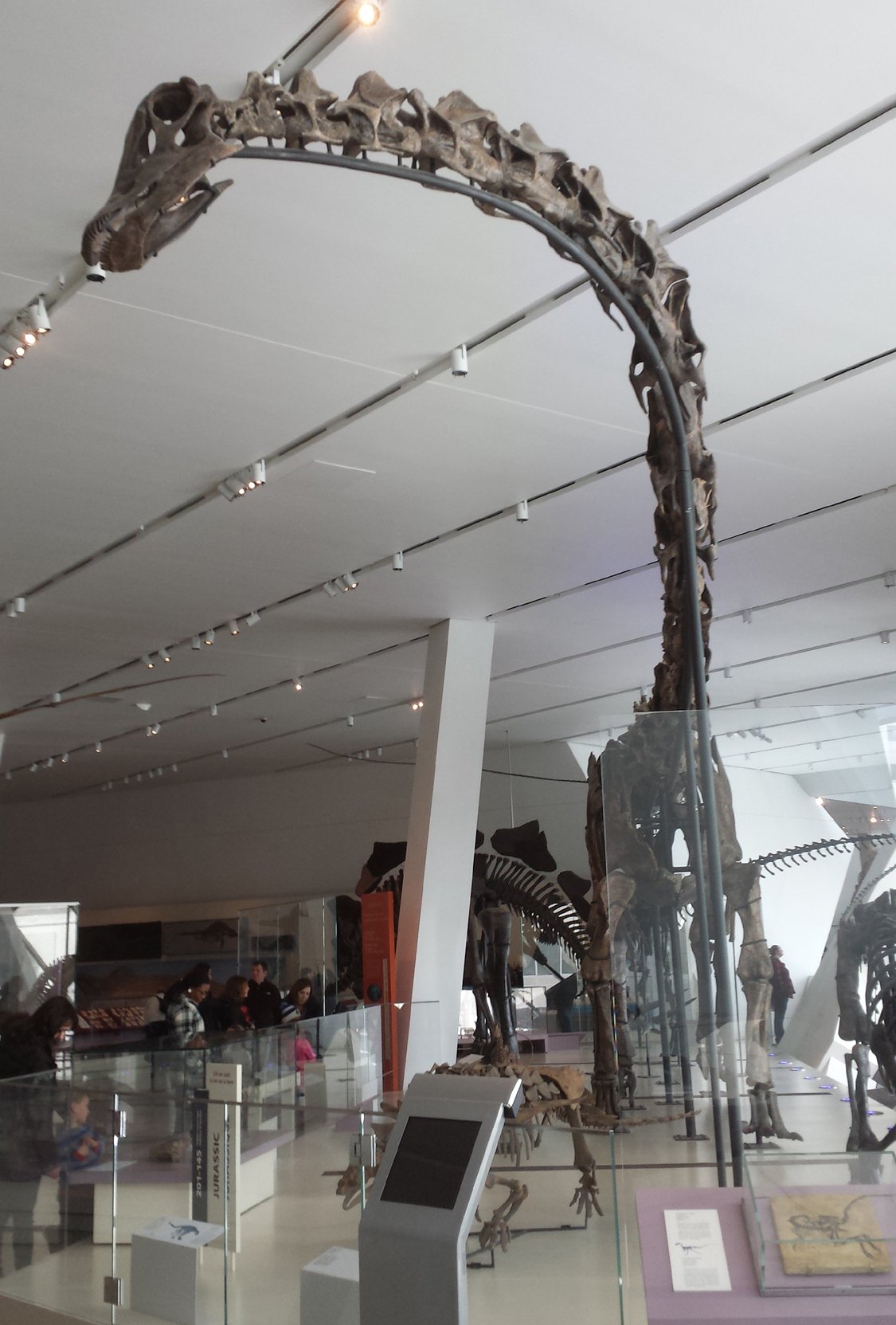
If Acrocanthosaurus was the neighborhood bully, then Sauroposeidon was the gentle giant everyone looked up to – literally. Extrapolations based on the more completely known Brachiosaurus indicate that the head of Sauroposeidon could reach 16.5–18 m (54–59 ft) in height with its neck extended, which would make it one of the tallest known dinosaurs. With an estimated length of 27–34 m (89–112 ft) and a mass of 40–60 t (44–66 short tons), it also ranks among the longest and heaviest. Think of a giraffe, but multiply its height by three and give it a tail that could level a forest. This magnificent sauropod earned its name from the Greek god Poseidon, the “earthquake god,” because its footsteps literally made the ground shake. The generic name comes from sauros (Greek σαύρος for “lizard”), and Poseidon (Ποσειδών), the sea god in Greek mythology, who is also associated with earthquakes, that facet styled as Ennosigaios or Enosikhthōn, “Earthshaker”. This is a reference to the notion that a sauropod’s weight was so great that the ground shook as it walked. In a state where everything bigger is better, it comes as no surprise that Sauroposeidon, the state dinosaur (adopted June 19, 2009), is the tallest ever. In 2012, numerous other sauropod remains, known for decades under a variety of names, got shuffled under the genus Sauroposeidon, including Paluxysaurus jonesi, then Texas’ state dinosaur.
The Persistent Predator: Deinonychus antirrhopus
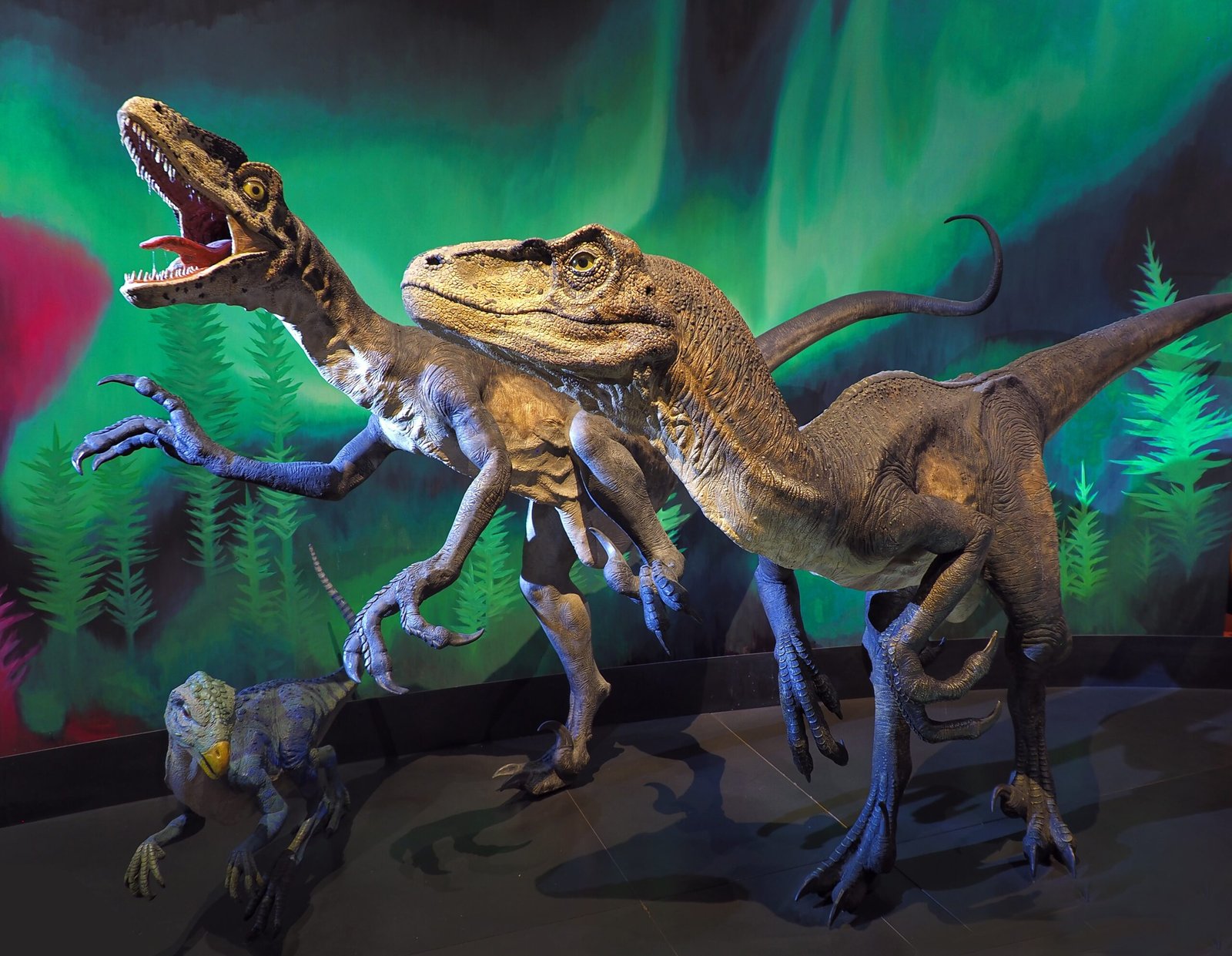
Picture a velociraptor from your favorite dinosaur movie, but make it bigger, smarter, and absolutely relentless in its hunting strategies. This species, which could grow up to 3.4 meters (11 ft) long, lived during the early Cretaceous Period, about 115–108 million years ago (from the mid-Aptian to early Albian stages). Deinonychus, whose name literally means “terrible claw,” was equipped with a sickle-shaped killing claw on each foot that could slice through flesh like a razor. The Deinonychus existed 115 to 108 million years ago. Due to its sickle-shaped hind foot claw, the genus Deinonychus is known as the “awful claw .”As it attacked much larger plant-eating dinosaurs like Tenontosaurus, this dinosaur likely hunted in packs. What made these predators truly terrifying wasn’t just their weapons, but their intelligence and teamwork. Deinonychus teeth found in association with fossils of the ornithopod dinosaur Tenontosaurus are quite common in the Cloverly Formation. Two quarries have been discovered that preserve fairly complete Deinonychus fossils near Tenontosaurus fossils. The first, the Yale quarry in the Cloverly of Montana, includes numerous teeth, four adult Deinonychus and one juvenile Deinonychus. The association of this number of Deinonychus skeletons in a single quarry suggests that Deinonychus may have fed on that animal, and perhaps hunted it. These pack hunters revolutionized how scientists think about dinosaur behavior and intelligence.
The Spiky Defender: Tenontosaurus tilletti
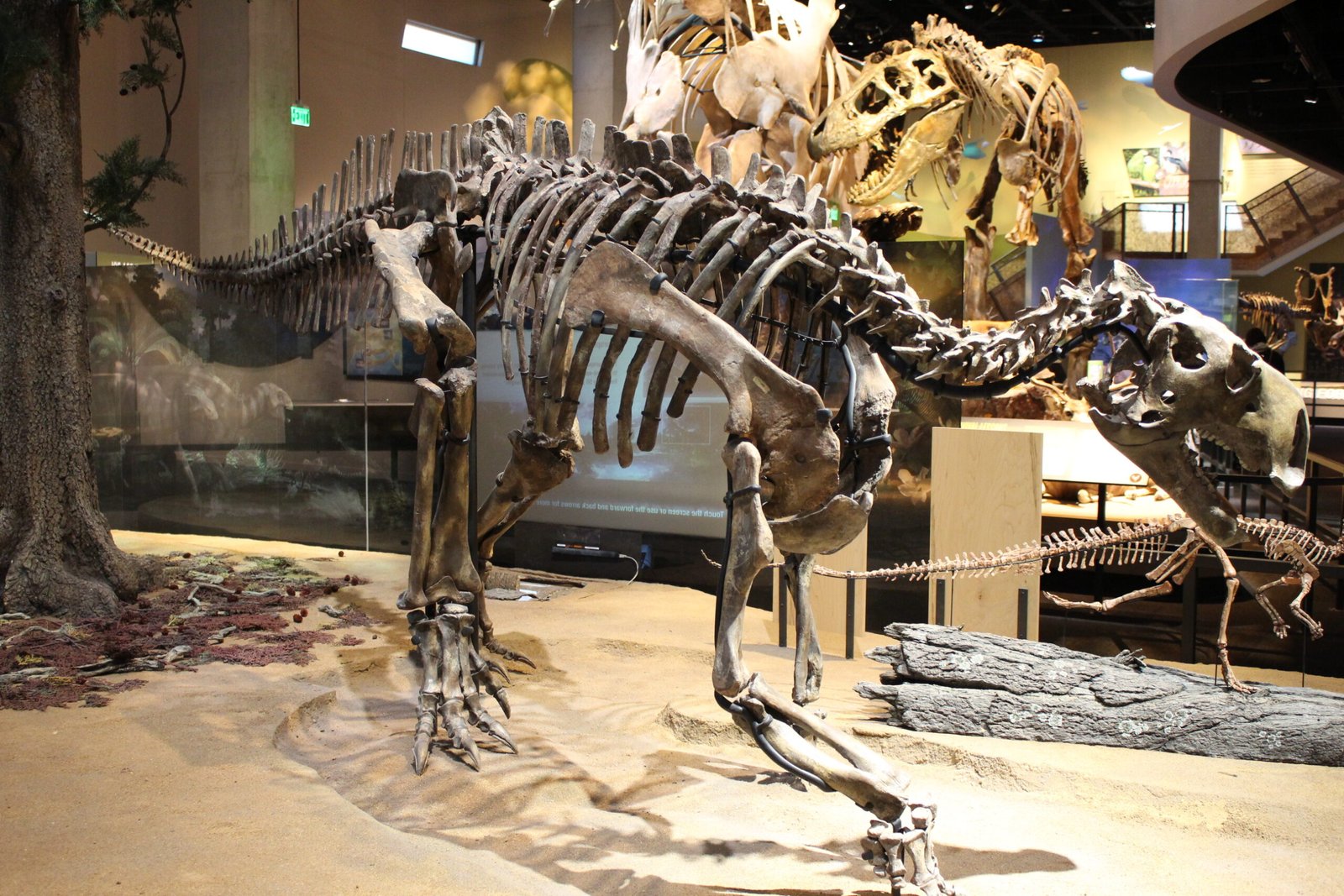
Not all dinosaurs were built for offense – some were masters of defense, and Tenontosaurus was like a walking medieval fortress with attitude. It had an unusually long, broad tail, which like its back was stiffened with a network of bony tendons. The genus is known from the late Aptian to Albian ages of the Early Cretaceous period sediments of western North America, dating between 115 and 108 million years ago. Imagine a dinosaur that looked like it was designed by someone who really, really didn’t want to be eaten. Due to its strong, sinewy tail, Tenontosaurus is known as the “sinew lizard.” Although it could stand on its hind legs, this dinosaur ate by crawling on all fours. It probably utilized its extremely long, deep tail as a flail to fend off predators. This herbivore was like nature’s version of a medieval knight’s mace – but instead of swinging a weapon, it swung its entire massive tail at approaching predators. Tenontosaurus was a low browser, and an adult would have had a maximum browsing height of about 3 meters (10 ft) if it adopted a bipedal stance. This restricted Tenontosaurus, especially juveniles, to eating low-growing ferns and shrubs. Despite its defensive capabilities, fossil evidence shows it frequently became the main course for hunting packs of Deinonychus.
The Massive Crocodilian: Deinosuchus
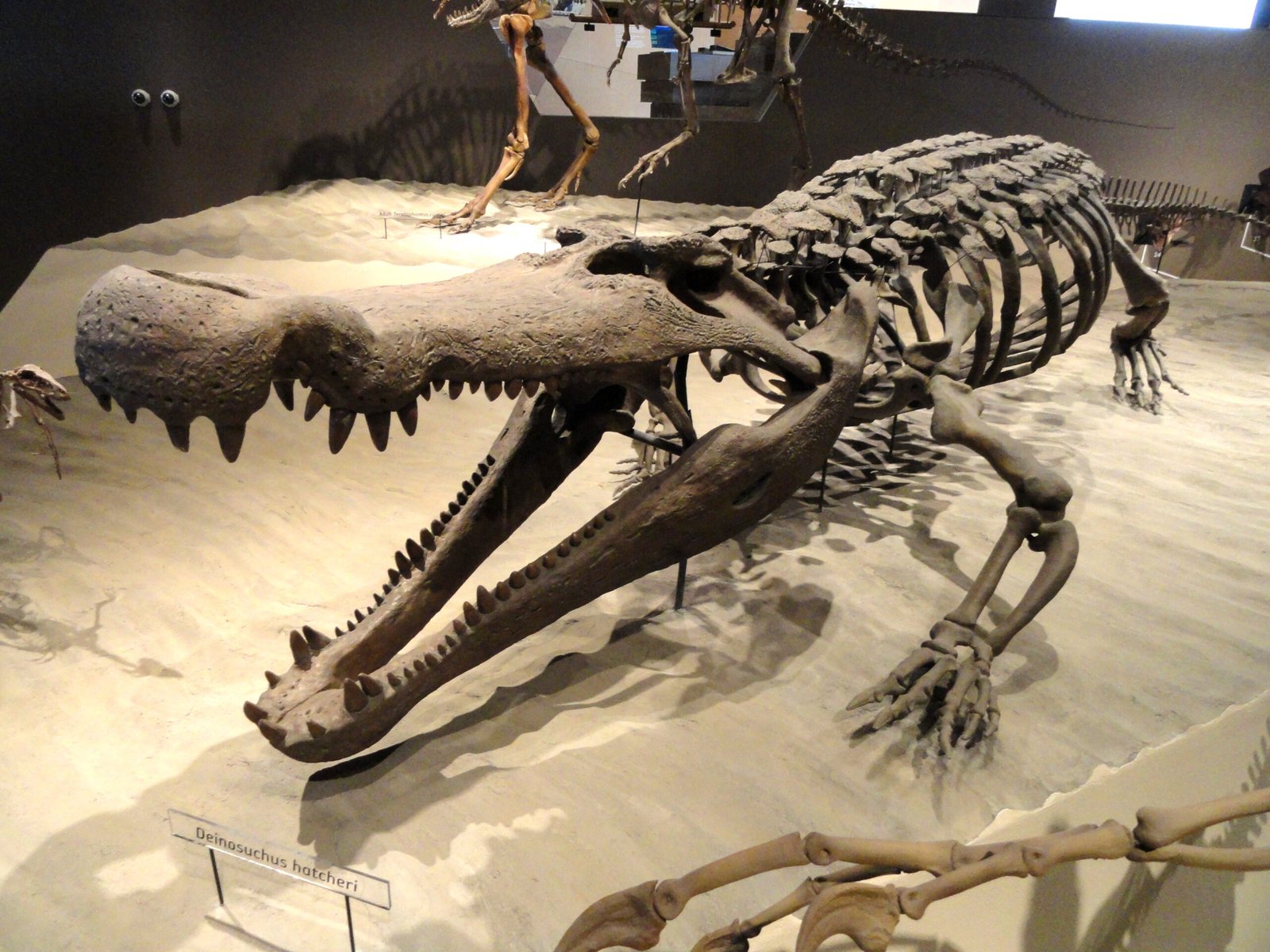
While not technically a dinosaur, Deinosuchus shared the same prehistoric Texas landscapes and was so massive and influential that it deserves a place in this ancient hall of fame. Among their finds was the nearly complete skull of Deinosuchus, Shiller says, a crocodilian almost 40 feet long that chomped delta turtles and dinosaurs with equal enthusiasm. Picture a crocodile the size of a school bus with jaws so powerful they could crush a small car – that’s Deinosuchus. There’s a deinosuchus tooth. This is kind of a smaller one,” Corrick says. He thinks it was probably from the front of the creature’s mouth, where its teeth were long and were used to catch prey. Towards the back of its jaw, the teeth were blunt — built for crushing. Paleontologists estimate that deinosuchus’ bite packed more force than that of a t-rex. This apex predator lurked in the ancient waterways of Texas, proving that even the mighty dinosaurs had to watch their step when approaching the water’s edge. Its bite force exceeded that of a Tyrannosaurus rex, making it one of the most formidable predators in prehistoric Texas.
The Late Arrival: Alamosaurus sanjuanensis
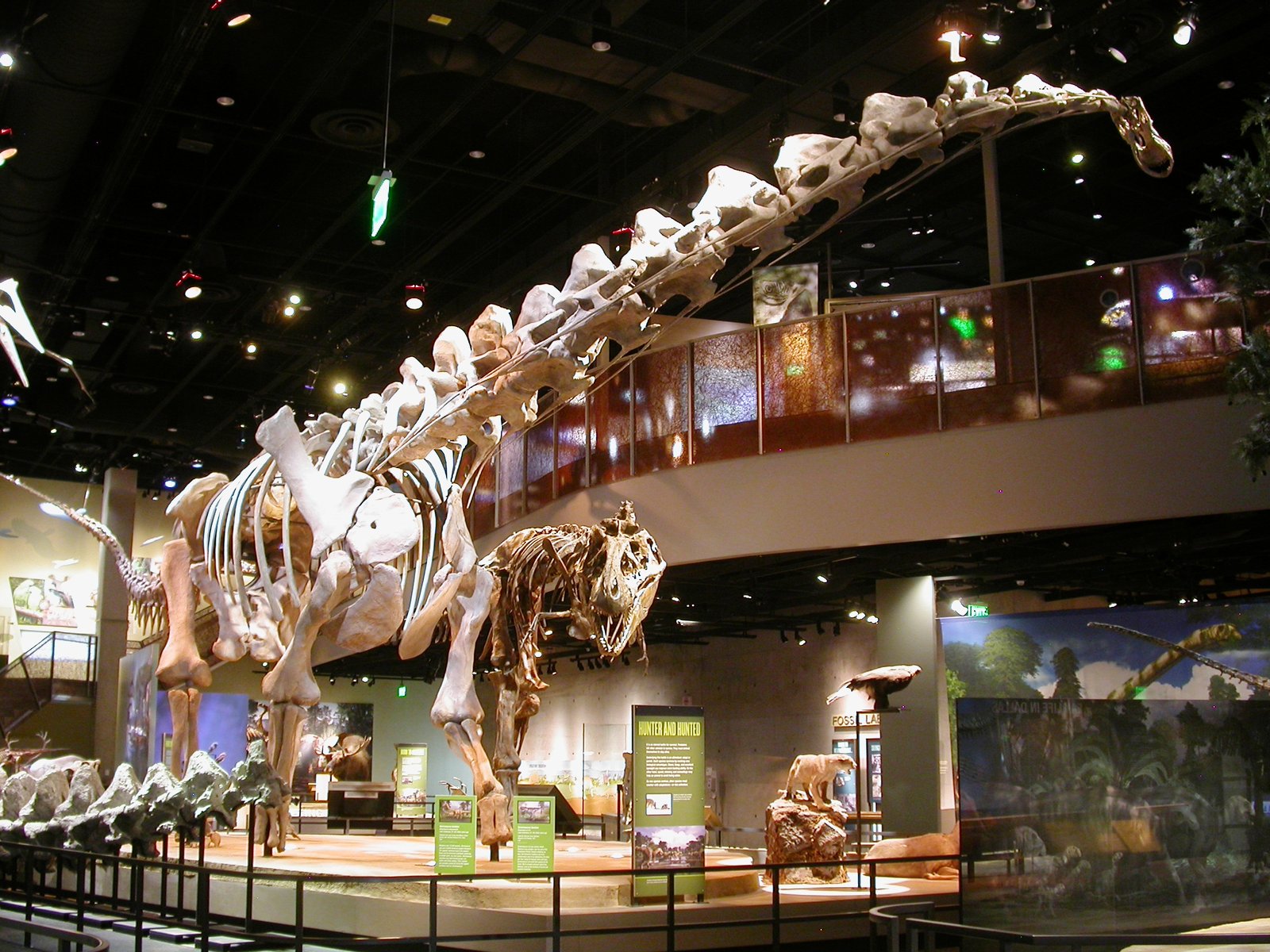
Just when you thought the age of giants was over, along came Alamosaurus to prove that bigger can indeed be better, even at the very end of the dinosaur era. Alamosaurus was a 50-foot-long titanosaur that couldn’t chew with its peg-shaped teeth. The dinosaur Alamosaurus lived in what is now southern North America during the late Cretaceous Period. Despite other fossil specimens coming from the Lone Star State, this 50-foot-long titanosaur that resembled Paluxysaurus was named after the Ojo Alamo Formation of New Mexico, not the famed Alamo of San Antonio, where it was first unearthed. This massive sauropod was like nature’s final farewell gift to the Age of Dinosaurs – a last hurrah before the great extinction. It was the last known North American sauropod prior to an absence of the group on the continent of roughly 40 million years that ended with the appearance of Alamosaurus during the Maastrichtian. Standing at nearly 100 feet tall, the Alamosaurus was an herbivore that devoured the similarly tall trees that once covered the Big Bend area in the age of the dinosaurs. Unlike its earlier sauropod relatives, Alamosaurus couldn’t actually chew its food, instead using its peg-like teeth to strip vegetation that it would then swallow whole, letting its massive stomach do all the processing work.
The Thumb-Spiked Browser: Iguanodon
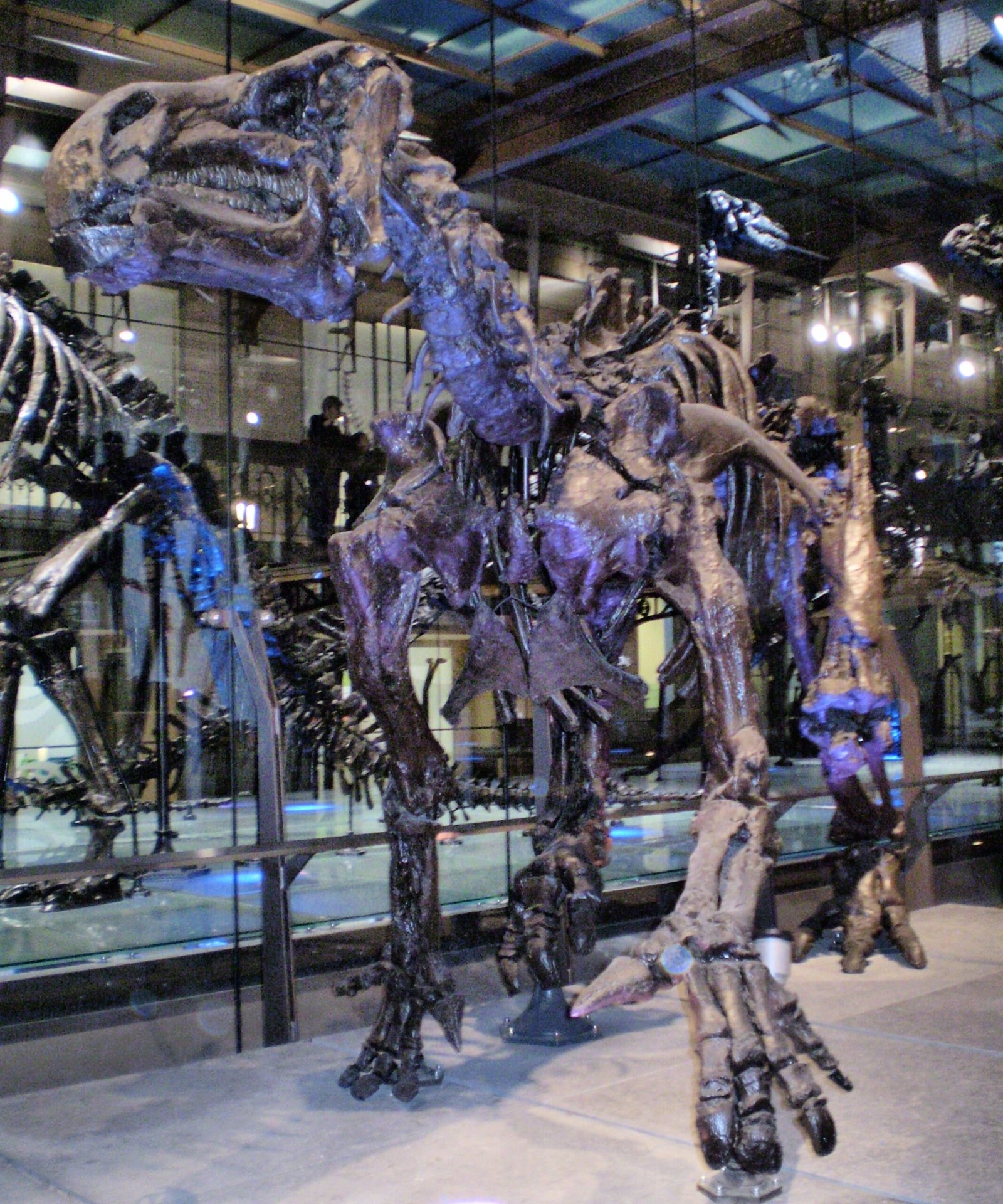
While Iguanodon might not have been as flashy as some of its Texas neighbors, this dinosaur was like the Swiss Army knife of the prehistoric world – equipped with a deadly thumb spike that could serve as both tool and weapon. The forefoot of the Iguanodon possessed a spiky thumb for self-defense. Iguanodon is a genus of iguanodontian dinosaurs that was named in 1825. The moniker “iguana tooth” refers to how huge its teeth were compared to those of an iguana lizard. Think of a dinosaur that could walk on two legs when it needed to run, drop to all fours when it wanted to browse for food, and had a built-in switchblade for emergencies. It had the ability to walk on all fours or stand on its hind legs. Each of its five-fingered forefoot possessed a spiky thumb for self-defense, while the three toes on each rear leg ended in claws resembling hooves. Iguanodon traveled in herds and cut down foliage with its horn-covered beak. This adaptable herbivore was living proof that sometimes the best survival strategy isn’t being the biggest or the strongest, but being the most versatile. If it’s a large, three-toed track with claw marks, a good candidate is fearsome Acrocanthosaurus (named “high-spined lizard” for its tall neural spines), second largest carnosaur in North America after Tyrannosaurus rex. Other clawless three-toed footprints might be attributed to the hefty ornithopod Iguanodon, one of first dinosaurs ever discovered.
The Ancient Landscape of Prehistoric Texas

Understanding these magnificent creatures means stepping back in time to see Texas as it really was millions of years ago. Once upon a time, about 260 million years ago, the land before Texas was not really land at all. In fact, Texas was completely covered by ocean. Roger Ferris, author of “The Collectors Guide to Sharks and Rays from the Cretaceous of Texas,” says that’s why it’s so common to find shark teeth and other remnants of ancient aquatic life in our often hot, dry state. Picture a world where the Gulf of Mexico extended far inland, creating a tropical paradise with lush forests, meandering rivers, and vast coastal plains. The paleoenvironment of Sauroposeidon consisted of tropical or sub-tropical forests, river deltas, coastal swamps, bayous and lagoons, probably similar to that of modern-day Louisiana. The paleoenvironment of both the upper Cloverly Formation and the Antlers Formation, in which remains of Deinonychus have been found, consisted of tropical or sub-tropical forests, deltas and lagoons, perhaps similar to the environment of modern-day Louisiana. This wasn’t the arid landscape we know today – it was a green, humid environment where giant dinosaurs could find plenty of vegetation and fresh water. The climate was so warm that there were no polar ice caps, and sea levels were much higher than today.
The Fossil Detective Story

The discovery of these ancient Texan residents reads like the greatest detective story ever told, with clues scattered across millions of years. Park ranger Zach Riggs leads me down a steep trail to the Paluxy River to view the main track site and a spot where traveling paleontologist Roland T. Bird discovered the world’s first sauropod tracks in 1938. Sauropods, as many dino-savvy grade-schoolers know, are a group of gigantic, quadrupedal, plant-eating dinosaurs with towering necks and long, whip-like tails. They left enormous tracks, wallowed out like washtubs. Sometimes the most amazing discoveries happen by pure accident. In May 1994, bloodhound trainer Bobby Cross was training his dogs and looking for arrowheads and small relics in the woods of Atoka County, Oklahoma. Stumbling across some fossils, he called the University of Oklahoma Natural History Museum. A team from the University of Oklahoma, led by paleontologist Richard L. Cifelli, uncovered three full vertebrae and two-thirds of a fourth. Initially, the fossils were believed to be too large to be animal remains and instead noted they were likely petrified tree trunks. Cifelli had the fossils stored until 1999, when he gave them to a graduate student to analyze. It took five years for scientists to realize they had discovered one of the tallest dinosaurs that ever lived!
Tracking Ancient Footsteps
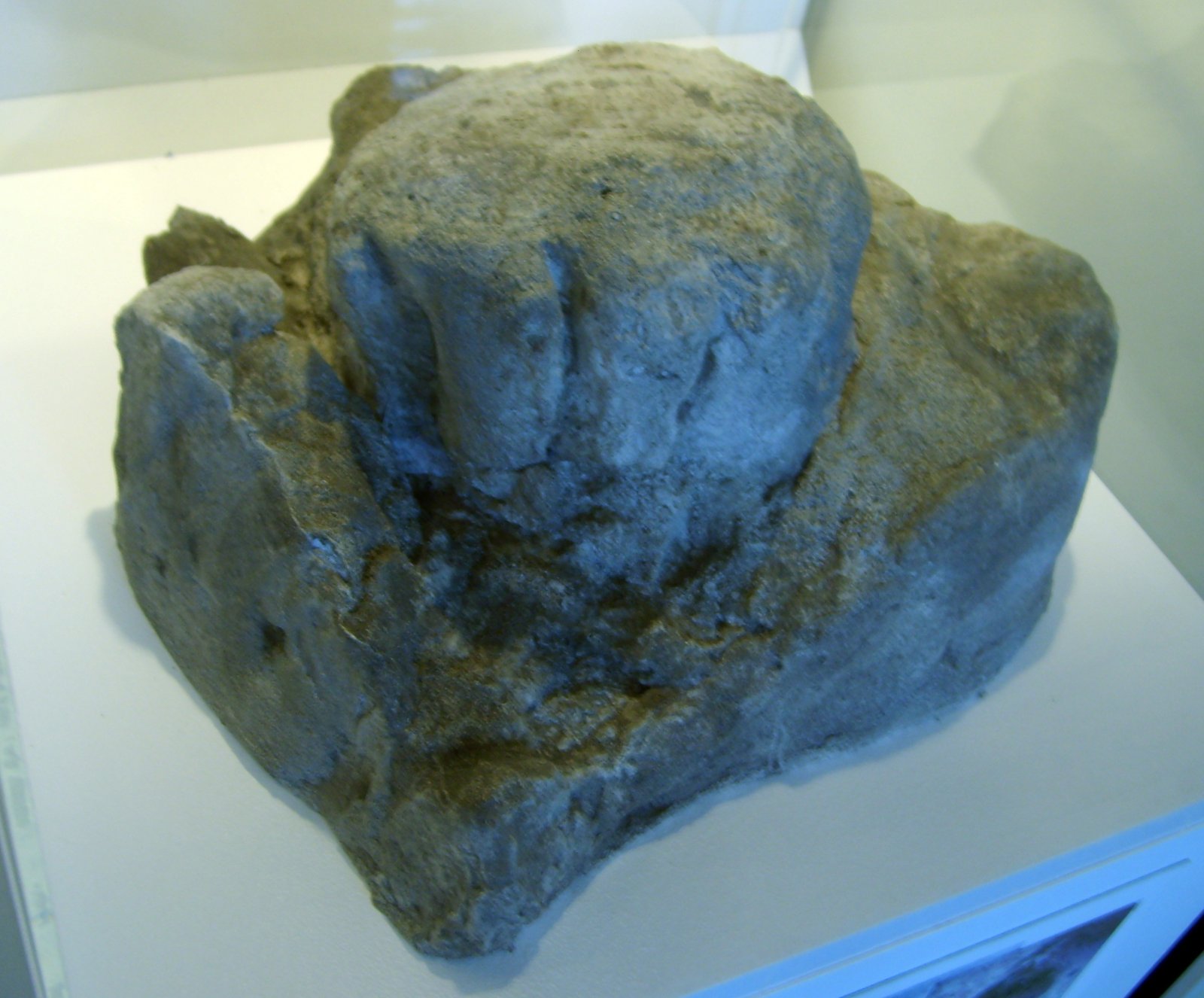
Sometimes the most telling evidence isn’t bones at all, but the footprints these giants left behind as they went about their daily lives. Glen Rose, a small town just south of Fort Worth, is the “Dinosaur Capital of Texas.” 113 million years ago, hundreds of dinosaurs used the nearby Paluxy Riverbed as a pedestrian highway. Their footprints were captured in thick mud that hardened over time, leaving an abundance of tracks and trails that still are visible today when you visit the Dinosaur Valley State Park. These fossilized highways tell us incredible stories about how dinosaurs lived, traveled, and interacted with each other. Still, Harris said the newly exposed tracks present a valuable find for researchers because they were made by living animals and can tell those studying the fossils more about the dinosaurs’ behavior and day-to-day lives. “You can get a lot of information about the posture of the animal that would be more difficult to get from the skeleton, about the speed, the animal which was moving, how it was responding to the sediment when the sediment was loose before it was turned to rock,” Harris said. It’s also possible to determine whether the dinosaur was moving in a certain direction, why it was going that way or whether multiple dinosaurs were moving together in a herd, Harris said, adding that all this is much more difficult to discern from studying skeletons alone. All told, there are thousands of fossil tracks in Texas, among the largest number of dinosaur footprints in the U.S. and the world.
The Great Predator-Prey Drama
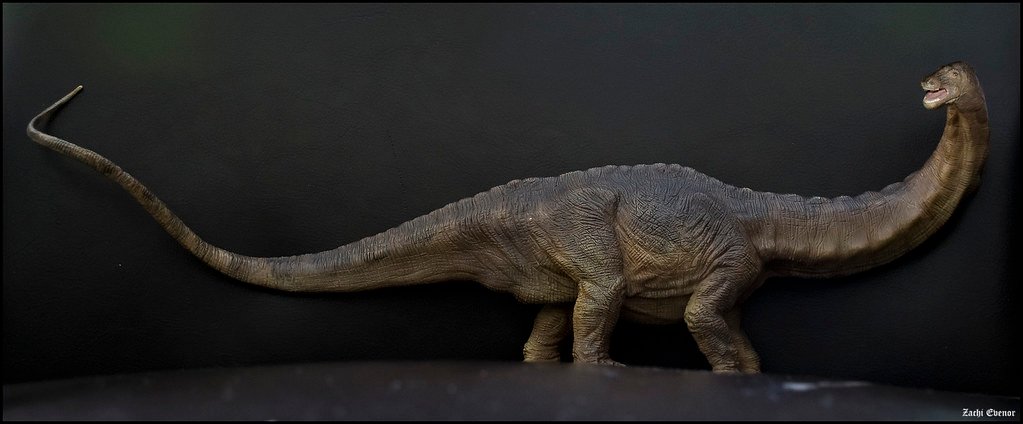
The ancient Texas landscape was like a real-life nature documentary, complete with dramatic chase scenes and survival strategies that would make modern wildlife seem tame by comparison. There were few predators which could attempt to attack a full-grown Sauroposeidon, but juveniles were likely to be preyed on by the contemporary Acrocanthosaurus atokensis (a carnosaur slightly smaller than a Tyrannosaurus), which likely were the apex predators in this region, and the small dromaeosaur Deinonychus antirrhopus. Picture this scene: a massive Sauroposeidon carefully watching over its young while an




